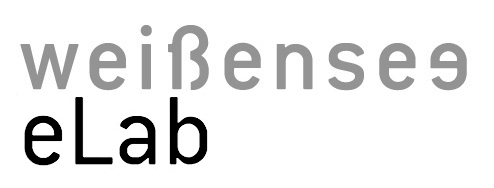Technique
ETextile Tailoring

An attempt to describe a process of designing, prototyping, testing and producing etextile garments.
Hydrogen Peroxide Etching

Hydrogen Peroxide Etching Conductive Fabric. Part of a counterchemists collaboration. Photos: https://www.flickr.com/photos/plusea/albums/72157710980633483 copper riptstop: silver lycra (front): silver lycra (back): silver lycra (stretched): materials: High acidity vinegar (24%): look in the cleaning section of your local supermarket for vinegars used in cleaning. Hydrogen Peroxide (Wasserstoffperoxid Lösung) 30%: ask at your local pharmacy and let them […]
Poly Resist Techniques: tie and wax
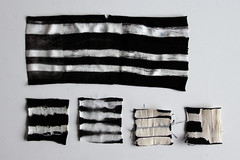
Two techniques for resisting In-Situ Polymerization of fabrics: “Tie-Poly”: tie-die binding Batik: application of hot wax Part of a counterchemists collaboration. Photos >> https://www.flickr.com/photos/plusea/albums/72157710354823622/page4/ VIDEO “Tie-Poly” Tie-dye is a technique of binding off parts of a fabric in order to prohibit the water dye from penetrating into these regions. Scrunching the fabric and tying string […]
In-Situ Polymerization

Part of a counterchemists collaboration. Photos: https://www.flickr.com/photos/plusea/albums/72157710884689521 Polymerization of PolyPyrrol materials: Pyrrol Polymerization agent tools: DIY Magnetic Stirrer https://www.instructables.com/id/Easy-DIY-Magnetic-Stirrer/ POLYMERIZED FABRICS: Knit Viskose – 95% viskose, 5% elastan Knit Bamboo – 95% bamboo, 5% elastan Shieldex® Technik-Tex P130 – 78% Polyamide, 22% Elastomer, 99% pure Silver Powermesh – 82% nylon 18% spandex Shieldex® Kassel – […]
Constructing a Dataglove Pattern
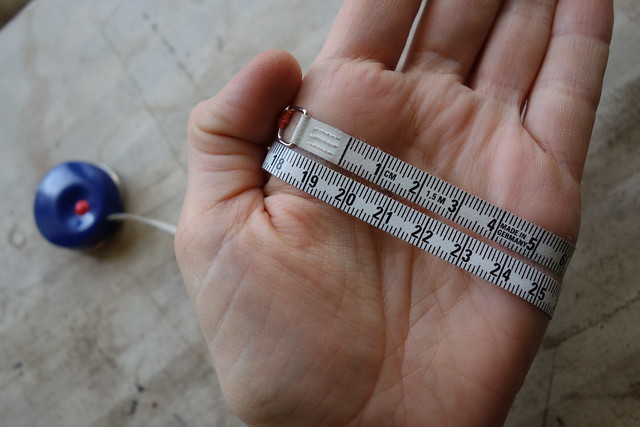
Many self-made datagloves I see on the Internet have been made by re-purposing existing gloves. While this is a wonderful “hack” and solution, I also wanted to add to this possibility that of tailoring your own gloves to a specific set of hands. The following instructions explain how to measure your hand, what measurements to […]
Modular Placement Prototyping Technique
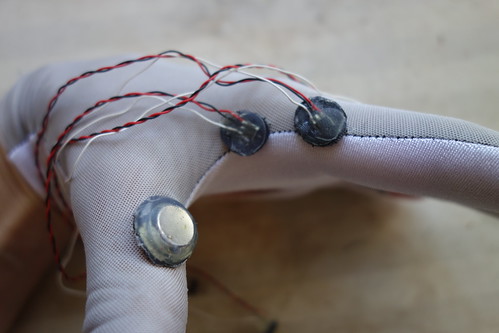
A modular system for prototyping the exact placement of sensors, to be able to use/try/test them before finalizing where they go! Nadja Kutz has been developing all kinds of ideas for making herself datagloves (and senor-wear) to allow her to interact with her computer in alternate (more healthy) ways. One nice quick&cheap solutions she has […]
Designing “Soft Circuits”

Analyzing what it means to make a “soft circuit”, which today still means combining a mix of soft and hard components.
machine embroidering

As a part of the Engineering for Social Impact workshop by NYUAD, I have visited embroidery workshop in Dharavi Mumbai. Here I’ve met an amazing embroidery machine that will be perfect for eTextile applications. This is an embroidery machine from Golden Wheel, model CS530 (I think, the label was faded out). It can do chain […]
Relief Embrodiery

Relief embroidery on leather is traditionally used in Austria to create decorative patterns on the surface of the leather used in Lederhosen. The embroidery thread does not pass through the material, instead it is stitched back and forth, pulling together the leather and creating a “bump” (germ. “wulst”). This bump also serves a purpose of […]
Ikat Woven Conductive Thread

Ikat is a technique of partially dying yarns before weaving them to create a patterned fabric. A resist is applied to the yarn before the yarn is submerged in dye. This post describes a process of etching (rather than dying) conductive thread selectively, leaving some parts conductive and others non-conductive. The resulting “striped” thread is […]
Batik Etching Conductive Fabrics

Using Batik was as a resist, applying it to copper fabric and etching in a salt and vinegar bath.
Dyeing Conductive Yarn

Conductive yarns are often in gray color which makes your project looks grayish. What if we color them in different colors so we can explore the aesthetic expression more freely, or match the conductive yarn color with the rest of the yarn to hide it completely? I have made a trial to dye the conductive […]
Weaving Conductive Fabric

Commercially available conductive fabrics are mostly evenly coated basic woven and knit structures. There is nothing fancy, distinct or particularity interesting about their aesthetic appeal. They are metallic, shiny and uniform. What if you could weave your own conductive fabrics. For one you could tailor the electrical properties of the fabric to your own designs, […]
Fabric Pleating

Chris Palmer demonstrated how to pleat fabric using a technique of pre-stitching it together with thread. More about his work and technique, and the patterns for the folds are all documented in his book Shadow Folds.
Machine Felting

Using an embellishing machine to felt a black conductive felt (by Eeonyx) to a non-conductive felt.
Needle Felting Conductive Wool

You can make a conductive felt with conductive wool. This method is used to make a conductive carpet for airplanes and other shielded place. I have used needle felting method to make a conductive pattern on felt. This conductive wool’s property is something similar to conductive yarn’s. When you squeeze the ball of wool, the […]
needle felting (wet)

Here is the documentation of my first experience on wet needle felting. My friend who does a lot of felting showed me how to do it. It seems that there are many ways to felt, so this is not the only way, but it works fine. Process We used felting wool (you can purchase it […]
Salt and Vinegar Etching

Use Vaseline as a resist and a bath of salt and vinegar to etch away the copper from copper fabric to make circuits and sensors.
Embroidering Mirrors

“Shisha (the Hindi word for “little glass”) embroidery is also known as mirror-work or abla embroidery. Originally, pieces of mica were used as the mirrors, but later, thin blown-glass pieces were broken and used. Today, small mirrors are commercially available for shisha embroidery. If you use these, make sure to file the edges first so […]
Granny Squares

Granny Squares are perhaps the first thing you can do when you learn how to crochet… It can look quite “Granny”, but if you have a good color combination and different thickness of yarn, it can look not so Granny:)
Needle Felting

also see: fine steel wool Needle felting seems to be a great technique for constructing sensors from conductive, resistive materials mashed up with regular felting wool.
Large Scale Knit, Crochet and Knotting

Knitting, crocheting and knotting yarn, rope and other materials to make even larger 2 and 3 dimensional structures!
Crochet

You can find a great selection of basic crochet tutorials online. We taught ourselves how to crochet by watching YouTube tutorial videos.
Loop Stitch
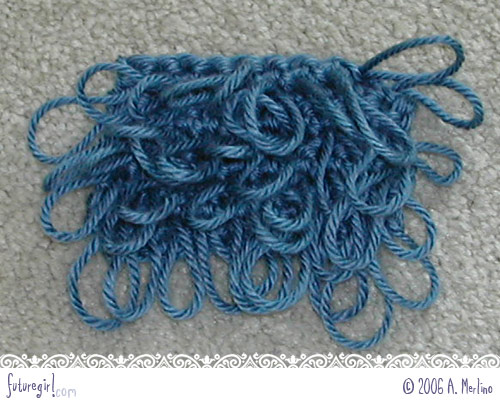
also: loop stitch, fur stitch, crocet loop fabric I really like the following loopy samples. There are different techniques and they can either be crocheted or knitted. The loops can be left as loops or cut and they will not unravel as the way it is worked essentially ties off the ends.




